Opinion: How is Nikon’s Z lens lineup shaping up & what do we want next?
posted Wednesday, July 6, 2022 at 3:30 PM EDT
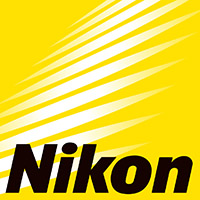
Nikon has been very busy making new Z lenses. In the previous 13 months, Nikon has released the following 11 lenses: Nikkor Z MC 105mm F2.8 VR S, Nikkor Z MC 50mm F2.8, Nikkor Z 28mm F2.8 (SE), Nikkor Z 40mm F2, Nikkor Z DX 18-140mm F3.5-6.3 VR, Nikkor Z 24-120mm F4 S, Nikkor Z 100-400mm F4.5-5.6 VR S, Nikkor Z 28-75mm F2.8, Nikkor Z 400mm F2.8 TC VR S, Nikkor Z 800mm F6.3 VR S and most recently, the Nikkor Z 400mm F4.5 VR S.
It's fair to say that the rapid pace can't keep up. But for Nikon to have accomplished such a feat during a pandemic and, we assume, facing similar supply constraints as just about everyone else on the planet, is remarkable. And we know there's more to come. The current lens roadmap shows that Nikon is still poised to release a 26mm prime, a 24mm DX lens, a DX 12-28mm zoom, 85mm prime, 200-600mm telephoto zoom, and a 600mm telephoto prime – which to our eyes appears to be a 600mm F4. It'll be interesting to see if that 600mm lens incorporates a teleconverter like Nikon's Z 400mm F2.8 TC VR S.
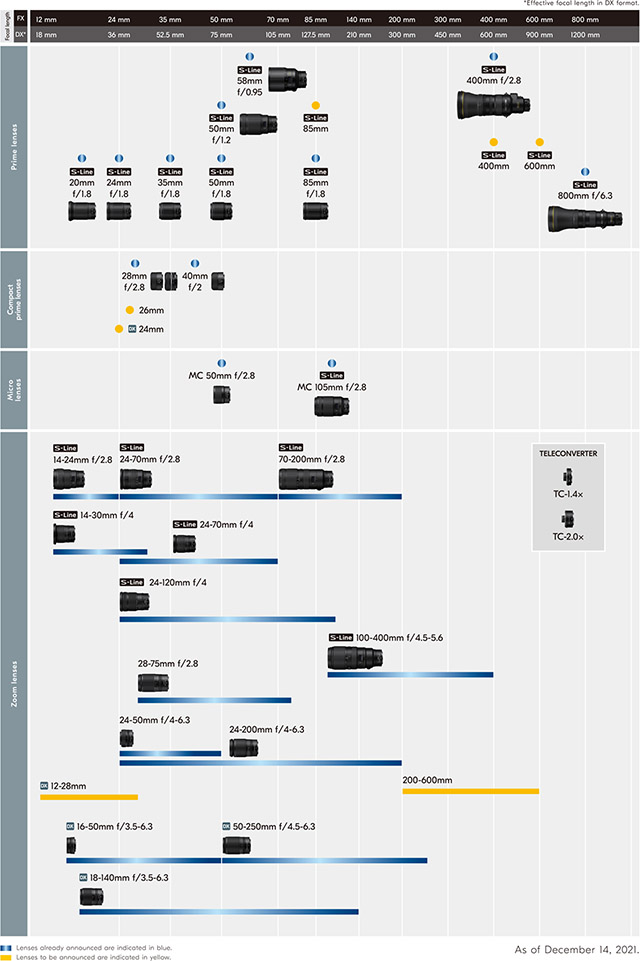
Let's take stock of how many lenses Nikon has released for its mirrorless Z system. Remember, the system itself was first launched in the autumn of 2018 with the introduction of the Nikon Z6 and Z7 full-frame mirrorless cameras and a trio of lenses, the Nikkor Z 24-70mm F4 S, Nikkor Z 35mm F1.8 S and Nikkor Z 50mm F1.8 S. Including those original launch lenses, Nikon has released 26 Z lenses, plus a pair of teleconverters (1.4x and 2x).
Nikon Z mount versus Nikon F mount: Where's the Z mount coming up short?
There are a lot of Z lenses. However, despite the impressive suite of Z lenses, the collection pales in comparison to Nikon's legendary F-mount lineup. In Nikon's current catalog of F-mount lenses, which doesn't include every version of different lenses, like the multiple 24-70mm F2.8 or 70-200mm F2.8 zooms, there are nearly a hundred lenses.
Of course, not every lens available for F mount but not Z mount is worth revisiting. For example, Nikon doesn't need to rush to create a Micro Nikkor lens for DX Nikon Z cameras when the Z MC 50mm F2.8 Macro is already so compact and lightweight. Nor does Nikon need to prioritize a 200mm F4 telephoto lens or a 180mm F2.8. While I enjoyed my own AF Nikkor 180mm F2.8D IF-ED lens, it's not a key part of a prospective Z lineup that includes a 70-200mm F2.8 telephoto zoom.
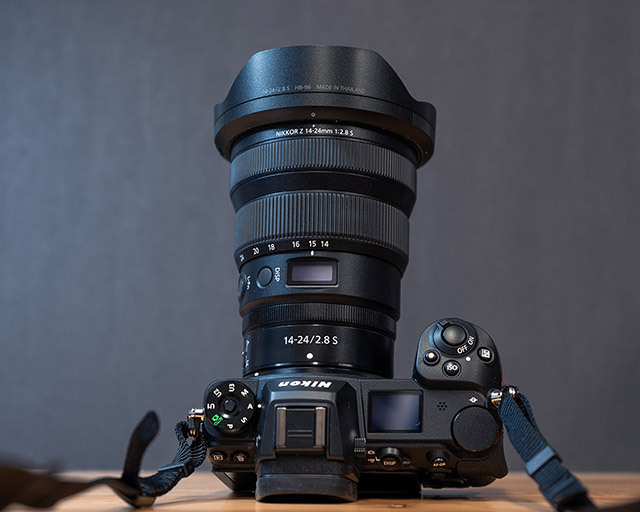
Other DSLR lenses have been replaced by similar Z lenses that serve the same purpose. For example, you could make the case that the upcoming 200-600mm telephoto zoom is a replacement for the popular 200-500mm F5.6E ED VR lens for F mount, a lens I think many photographers use on Z cameras thanks to the FTZ adapter. Another popular F lens was the AF-S Nikkor 16-35mm F4G ED VR, which was spiritually succeeded by the Nikkor Z 14-30mm F4 S, Nikon's first Nikkor S wide-angle lens in the Z system.
Speaking of the FTZ adapter, it's likely a good reason why Nikon hasn't focused as much on unusual or niche lenses so far with the Z system. We haven't seen a fisheye lens or a tilt-shift, or as Nikon calls them, "PC," lenses. It's not that these lenses aren't worthy of the Z treatment – they are – but they're highly specialized lenses. If someone needs them, such as a PC-E lens for architectural photography, you can use an FTZ adapter. Of course, not every Nikon F lens is fully compatible with the FTZ adapter. Some lenses, like non-CPU lenses, lack many features. That's not shocking, given that these lenses lack electronics, but the point is that not every F-mount lens delivers a full experience on Z cameras.
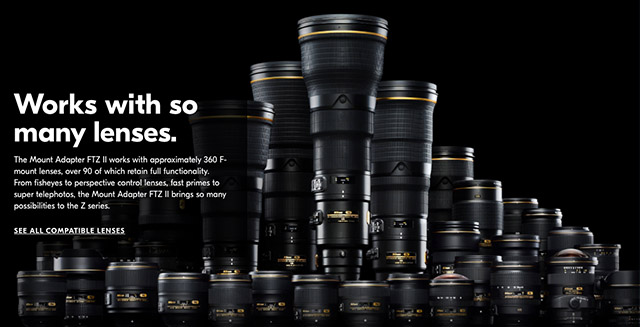
There's no doubt that the FTZ adapter is an amazing accessory for Nikon Z users, even ones who never shot with Nikon DSLR cameras. You can still purchase a wide range of Nikon F lenses and they work perfectly well on Nikon mirrorless cameras. If you're trying to save money, you can scour a very healthy used market for older Nikon F lenses. However, Nikon's Z lenses have almost universally been incredible. In the case of the 14-24mm F2.8, 24-70mm F2.8 and 70-200mm F2.8 lenses, specifically, they are such a step-up over their DSLR counterparts. That's not to say that the older zooms are bad, because they are fantastic. But Nikon's engineers have simply raised the bar with many of the Z lenses, especially the S-Line ones. The incredible performance Nikon is extracting from the Nikkor Z lenses makes it difficult not to wonder what native Z versions of some of Nikon's older F lenses could be like.
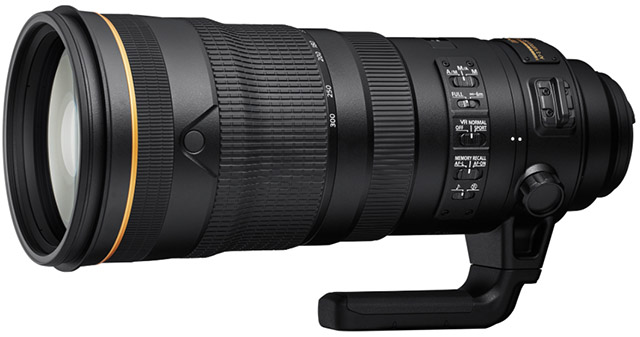
Which F lenses need Z versions?
Niche lenses aside, there are still some F-mount lenses that are deserving of the Z treatment. Whether that's a native Z version with a few improvements or a complete redesign, here are some contenders:
- Fast short telephoto prime lens, like the Nikon AF-S Nikkor 200mm F2G ED VR II. This is an interesting one and probably a pipe dream, but it's tough to top the silky smooth bokeh of a 200mm F2. It's also great for indoor sports and can easily be extended with a teleconverter when needed.
- Long macro lens, like the Nikon 200mm F4D ED-IF AF Micro Nikkor. This is one of the sharpest "D" lenses Nikon ever made. A 200mm lens also offers a much further working distance for macro photography than the very impressive Z MC 105mm F2.8 VR S Nikkor lens. I'm not sure how many macro lenses a camera system needs, but if Nikon ever wants to add a third, they could do a lot worse than making a modern version of the classic, beloved 200mm F4D EF-IF AD Micro Nikkor.
- 1.7x teleconverter, like the Nikon AF-S Teleconverter TC-17E II. I can't be the only person who likes 1.7x teleconverters. However, when Nikon refreshed its 1.4x and 2x teleconverters for DSLR lenses, bringing them to version "III," the 1.7x was left behind. I think it's safe to say that this in-betweener is dead, but I'd still like to see it return.
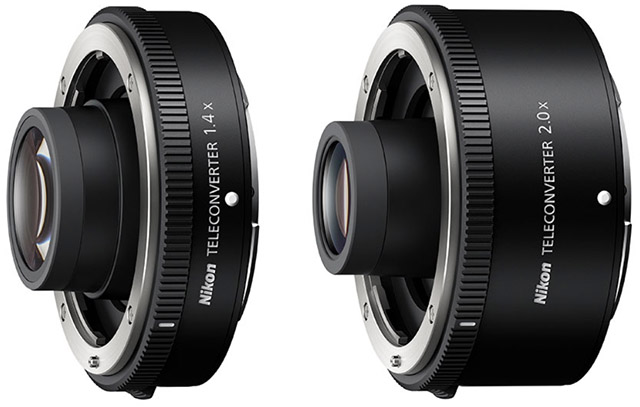
- Fast DX standard zoom, like the AF-S DX 17-55mm F2.8G IF-ED. I'm unsure what happened, maybe it was the general shift toward Nikon's enthusiast audience wanting only full-frame cameras, but Nikon stopped giving DX lenses fast apertures. I understand that the DX audience tends to spend less money and want more utilitarian lenses, like 18-140mm zooms with slower apertures. I'd love to see a premium APS-C camera sold with a fast kit lens.
- Fast telephoto zoom lens, like the AF-S Nikkor 120-300mm F2.8E FL ED SR VR. This is a strange lens. Nikon announced the 120-300mm zoom lens alongside the D6, so about a year after the Z system kicked off. By this point, Nikon had seemingly already shifted most of its resources to its mirrorless cameras and lenses, so the fact that an all-new fast telephoto zoom lens unlike anything else Nikon had ever released was coming out for DSLRs was, well, surprising. I'd love to see a Z version, even though it would be expensive.
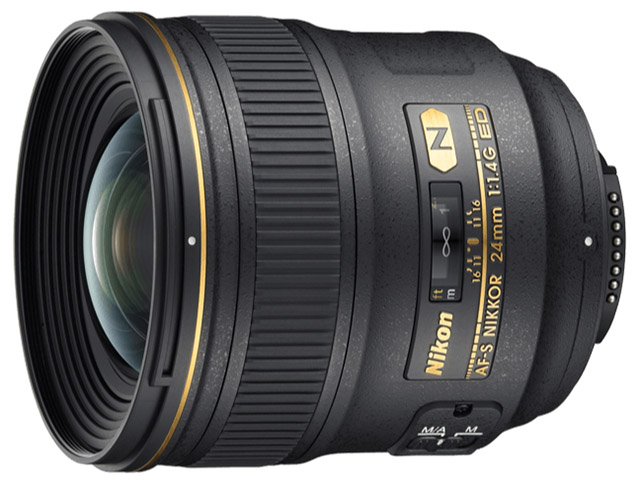
- More F1.4 primes. Nikon has done an awesome job releasing relatively fast, affordable, impressive F1.8 primes for Z cameras. We have 20mm F1.8, 24mm F1.8, 35mm F1.8, 50mm F1.8 and 85mm F1.8 prime lenses. We know a new 85mm S-Line prime is coming, and it's safe to bet on it being faster than F1.8, but what about a 24mm F1.4, like the AF-S Nikkor 24mm F1.4G ED? Or the AF-S 28mm F1.4E ED. Or the AF-S Nikkor 35mm F1.4G. You can see what I'm getting at. Nikon has a lot of F1.4 primes for its F-mount and not a single one for the Z mount. Nikon does have 50mm F1.2 and 58mm F0.95 Z lenses, but they're large, heavy and expensive. The lack of F1.4 primes might be the most surprising part of the Z system.
- Slower telephoto zoom, like the AF-S Nikkor 70-200mm F4G ED VR. The Nikkor Z 70-200mm F2.8 VR S is amazing, but it's also $2,600. The 70-200mm F4G ED VR lens is $1,400 – and still available, by the way. It's a lightweight, affordable solution for people who want a short telephoto zoom. Sony and Panasonic offer 70-200mm F4 zoom lenses in their mirrorless systems, so it's not an especially odd choice for mirrorless.
- The premium portrait prime, like the AF-S Nikkor 105mm F1.4E ED. This is also a common lens among modern camera systems. Sigma sells a 105mm F1.4, and Sony has a 135mm F1.8 GM, which is similar enough. Nikon's older 105mm F1.4E ED lens is a legendary optic, and many consider it among Nikon's best. The Z system is long overdue for a similar prime.
What lenses do we want next?
William Brawley, Managing Editor - Imaging Resource: I have to say, the Nikon Z lineup is already incredibly well-stocked, with almost one or two lenses covering most of the significant focal lengths. Nikon's higher-end S-Line lens lineup for the Z-mount is quite built out already, with many critical focal lengths covered.
It's hard to see what sort of lens I'd personally like to see next from Nikon -- a lot of my favorites are covered already -- or should soon be covered. As I've mentioned before, I'm a big wildlife fan, so when it comes to lenses for those pursuits, Nikon has me covered -- the new Z 400mm F4.5 and the Z 100-400mm are ideal there. If you can afford it, the Z 400mm F2.8 and Z 800mm F6.3 are premiere offerings. And then we have a 200-600mm on the roadmap; that should be another sweet lens.
However, to answer the question, I do agree that a fast-aperture DX-format zoom would be a very welcomed addition to the lineup -- an F2.8 wide-to-standard zoom would be a popular lens. And especially so if a more enthusiast-oriented Z-series camera comes out someday. (Perhaps something to compete with the Canon R7?)
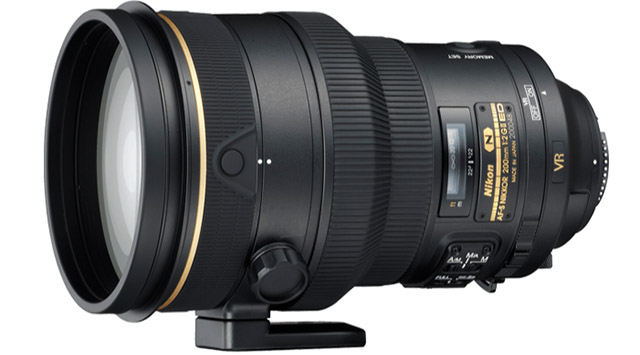
As an alternative or in addition to the Z 70-200mm F2.8, I think a shorter but faster telephoto prime would be another key lens that would make a great addition to the Z-mount family -- and it's something we don't yet see on the roadmap. Perhaps something like a 200mm F2 or 300mm F2.8 -- or maybe something slightly different like a 300mm F2 -- would make for an incredible indoor sports lens, offering great low-light performance and reach for sports such as football, soccer or hockey, just to name a few.
Dan Havlik, Senior Editor - Digital Photo; Digital Photo Pro: I'd love to see an 85mm f/1.4 or even an 85mm f/1.2 lens in a Nikon Z mount. This focal length and aperture combination is sorely missing from Nikon Z lens lineup so far, and I think every portrait photographer would rejoice when/if it happens. Quality 85 prime lenses in that aperture range have produced some of the creamiest bokeh I've ever seen. Plus, for me, 85mm creates the ideal working distance from your subject for portraits.
Wes Pitts, Editorial Director - Outdoor Photographer: One specialty optic that we haven’t yet seen in a native design for mirrorless is a perspective control, or “tilt/shift” lens, but there has been a rumor circulating for a couple of years now that Canon will release one.
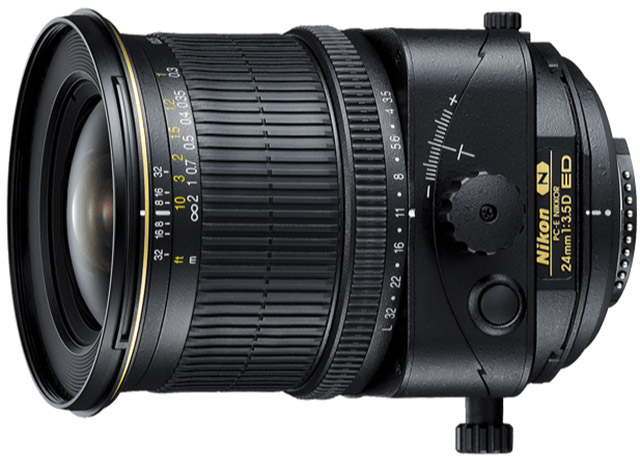
Jeremy Gray, Reviews Editor - Imaging Resource: My colleagues have offered some great options. I'd like to offer a couple of ideas, both based on existing lenses for other formats. The first inspiration is the Tamron 35-150mm F2-2.8 Di III VXD. I reviewed this lens, which is available for full-frame Sony cameras, and had a blast. It's relatively large and heavy, but it delivers great image quality and is a really nice focal length for a wide range of subjects. If Nikon wanted to pursue a similar lens and perhaps make it something like a 28-150mm instead, just to get a bit wider for landscapes, I'd be a happy camper.
Having just written a guide to the best lenses for astrophotography, I am inspired by the Sony 14mm F1.8 GM and the Sigma 14mm F1.8 DG HSM Art. These are two amazing ultra-wide angle lenses and I think a similar lens would fit in nicely in the Nikkor Z lineup. If Nikon could make a 14 or 16mm F1.8 lens that's as compact and lightweight as the Sony 14mm F1.8 GM, that would be fantastic.